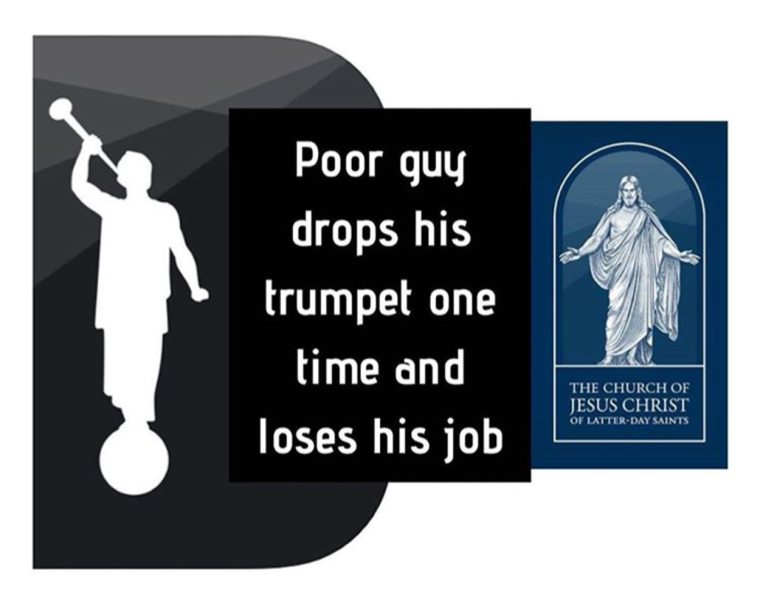
Ok, all joking aside, I was really intrigued by this new “symbol” or logo that was introduced at the Saturday evening session of General Conference.
I can see why they did this though. The Moroni statue has become the de facto symbol of our church in many ways and I think it is consistent with our using the full name of the church to make this visual change as well.
As a professional logo designer, and having studied symbolism quite a bit, I want to weigh in on some of the potential meanings that this new symbol implies.
When President Nelson said “new symbol,” I was expecting something more simple or abstract like the traditional Christian cross or the Muslim crescent, not a detailed rendering of the Christus statue!
My brain immediately went to all of the ways that this would be difficult to render at small sizes, embroidered, silk-screened, embossed, etc. but that’s where my professional mind takes me.
I then set aside my professional lens and let my symbolism lens take over and that is when I saw something very cool.
First, notice the numerical and archetypal structure here. The base is a series of 90-degree angles which implies the square and the number 4.
At the top, you have an arch which implies a circle and the number 1.
The square can represent the earth, matter, and mortality while the circle can represent the heavens, the spirit realm, and immortality.
The image of Jesus stands appropriately between these two archetypes as a transitional element, between the earthly and the heavenly.
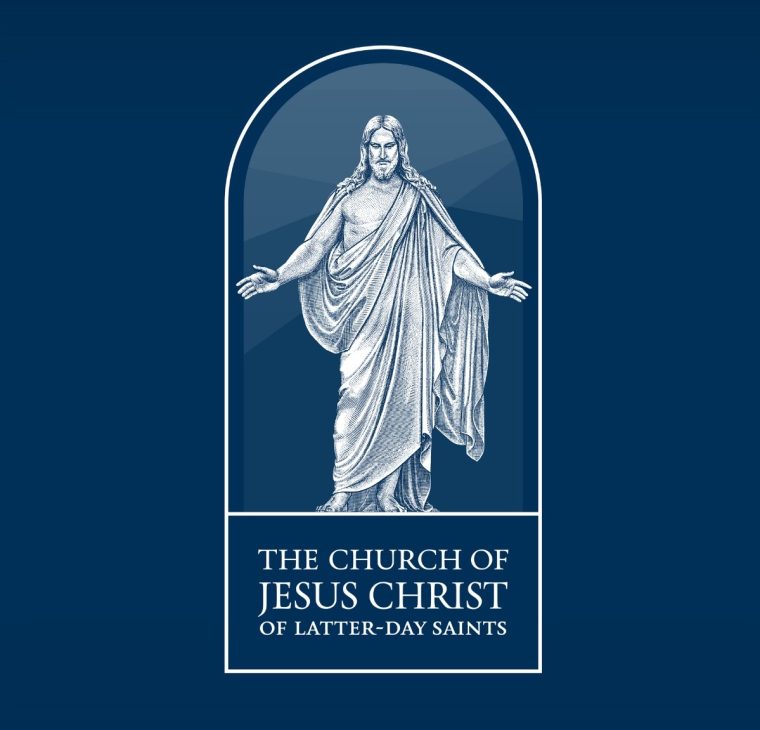
This same configuration is also seen in many of our chapel and temple steeples that feature a square base, a circle at the top or a point (representing the number 1) and an octagon in-between representing the transition from earthly to heavenly via the Christ-centric archetypes that the number eight represents.
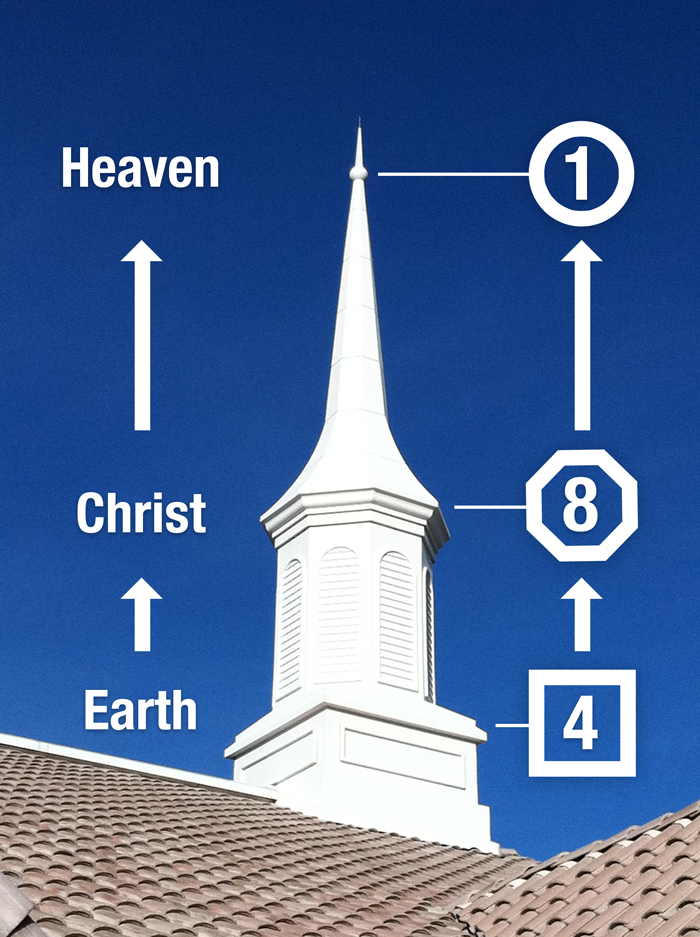
This transition between the square and circle was also the inspiration behind the oneClimbs logo that I created for this site.
The square and a circle are obvious, but the negative space creates an implied octagon. It is hidden there to convey the idea the Christ is everpresent in and through all things but only if you have eyes to see.
Consider the following references in regards to some of the potential meanings behind the number eight, visualized by an octagon, both of which point to Christ.
“The octagon draws on the symbolism of the number eight, emblematic of renewal. Eight-sided forms were felt to mediate between the symbolism of the square, representing earthly existence, and the circle (standing for heaven or eternity).”
Jack Tresidder, “Symbols and Their Meanings,” 154
“For there is one God, and one mediator between God and men, the man Christ Jesus;”
1 Timothy 2:5
“[Eight] is a starting-over number and is pervasive throughout scripture…”
Val Brinkerhoff, “The Day Star: Reading Sacred Architecture” (Book 2), 68
“Eight-niched soars this temple for sacred rites
Interior inscription for the baptistry of Milan
Eight corners has its font
Right to build this baptismal hall about the sacred number eight
For here the people are reborn.”
You can see this ascending 4 > 8 > 1 earthly to heavenly pattern with 8 as a transitional shape/number in sacred Lattery-day Saint architecture and in ancient Christian architecture as well.
Below are just a few of many, many examples that can be observed:
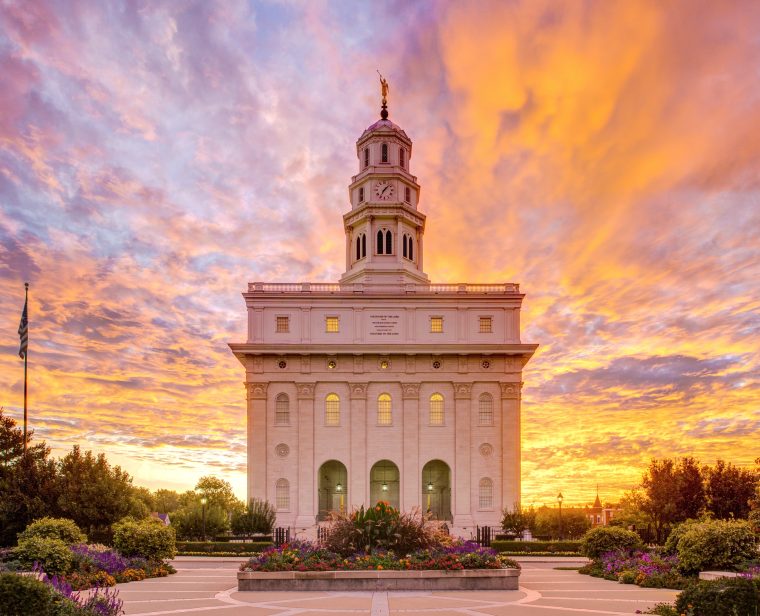
Nauvoo Temple 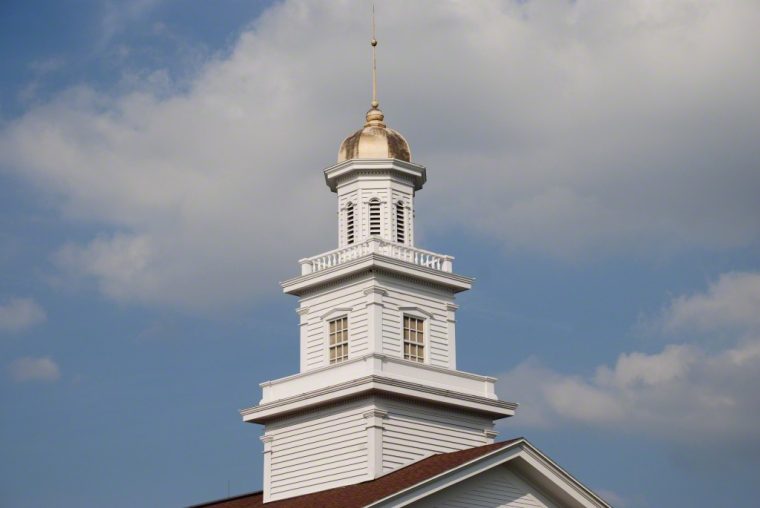
Fayette Church Steeple 
Utah chapel entrance with a window segmented into eight parts with an arch containing eight segments. Each door has eight segments as well. 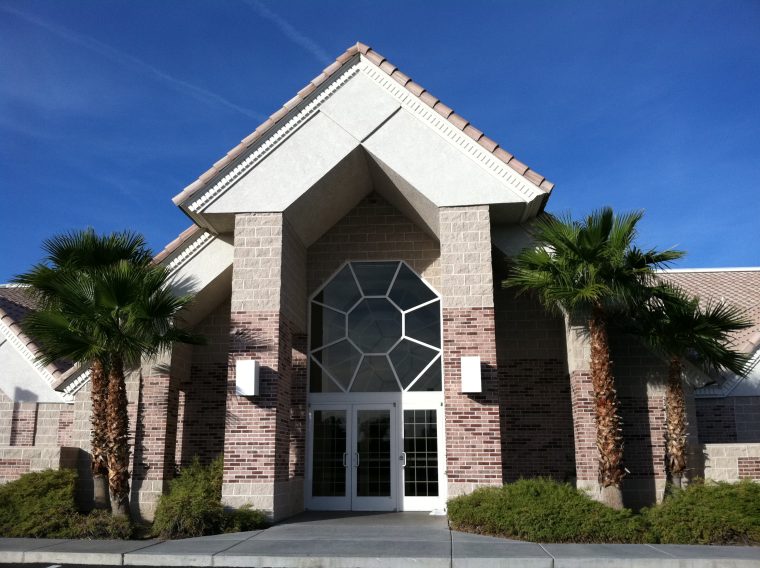
LDS Chapel entrance in Las Vegas 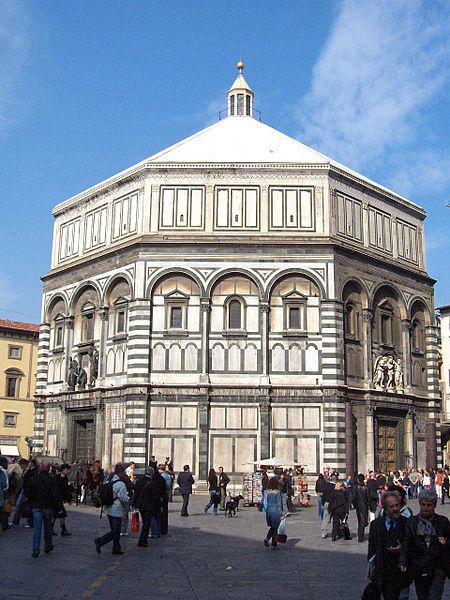
St. Giovanni Baptistery in Florence, Italy 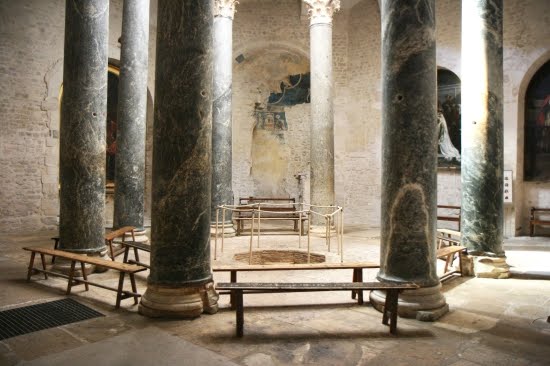
Cathedral Saint Sauveur Baptistery, Aix En Provence 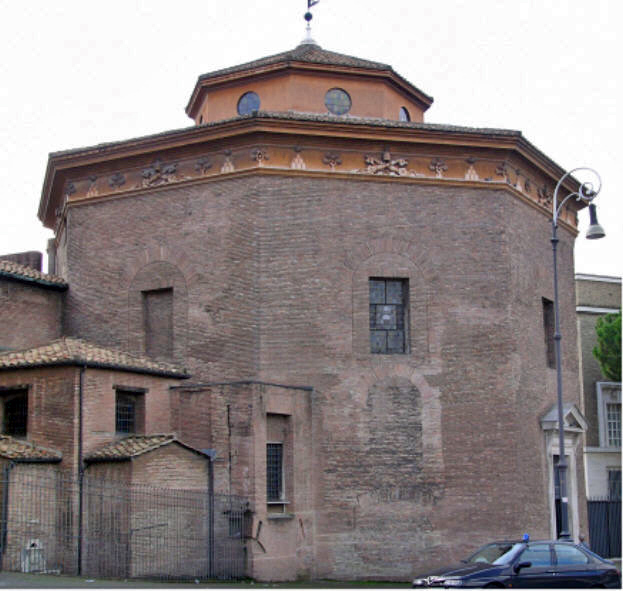
The Lateran baptistery 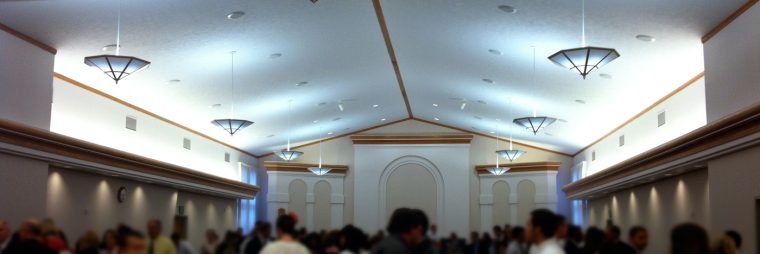
The new church symbol features this ancient pattern but replaces the octagon shape with an image that is unmistakably Christ. I also like the implied light behind the image of Christ that could imply the glory of God the Father, the light of Christ, the Holy Spirit, ongoing revelation, etc.
It is a combination of a variety of styles that actually work nicely together, a blend of the old and the new, a connection between the past and the present.
President Nelson mentioned that the arch reminds of the empty tomb, or perhaps Christ coming forth from the empty tomb. With some of the symbolism we have examined it could also represent Christ coming down from the heavens (circle/1) and returning to the earth. (square/4)
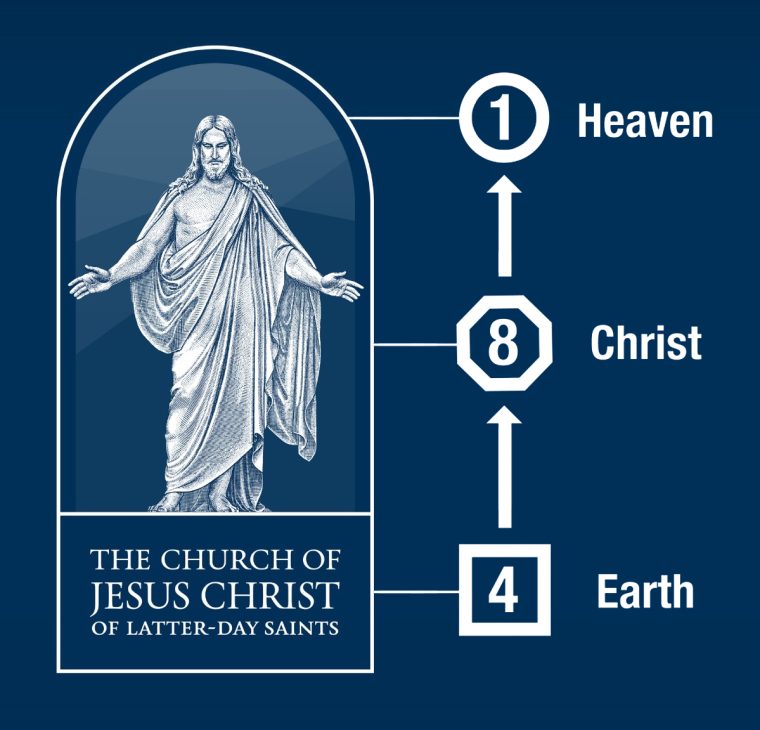
The circle + square + arch motif could even be further simplified into a very basic form but this isn’t a good idea. A very simplified version calls to the mind the empty tomb, but without the context the image of the Savior adds this also resembles a beehive, a gravestone, or the letter D that decided to take a nap!
The more simple a symbol is, the less control you have over how it is interpreted. There are advantages and disadvantages to this depending on how much additional context there is surrounding very simple symbols.

Where there is so much misunderstanding about our people, I think it is better to be exact and specific as to who we are and what we are about. A very simple symbol would be convenient for us but not effective in communicating who we are to the world.
I think the Church got this one right, I like the new symbol and I’m interested to see how it can help further bring the church “out of obscurity and out of darkness.” (preface to the Doctrine and Covenants)



4 Comments
Just came upon your site (Jan 2024) and found the comments on this page interesting.
Two days after the EARTHQUAKE in Utah when Moroni dropped his trumpet missionaries were called home due to COVID. This really shouted to me bc as members of the Church we know the angel Moroni with a trumpet is symbolic of preaching the Gospel of Jesus Christ to the world. Satan truly tried to disrupt the work with Covid but our Prophet was prepared. He had been warned and had already started preparing us (changes in MTC, home centered Church, etc.)
For me this was a certain sign that Satan is desperately trying to stop the work but will not succeed!!
Hey do you think this scripture Amos 3:14 has anything to do with Moroni trumpet falling off? A potential sign? With the closing of the temple.
Amos 3:14 states: “For on the day that I punish Israel’s transgressions, I will also punish the altars of Bethel; The horns of the altar will be cut off And they will fall to the ground.”
Prophecies in scripture were sometimes fulfilled in rather mundane ways.
Amlicites putting red on their heads was enough to fulfill the word of the Lord that a mark would come upon those that mingled with the Lamanites.
Even the birth of Jesus fulfilling Isaiah’s words that a virgin would conceive. An actual baby was born and nobody save a few shepherds knew about it. This major event went largely unnoticed at first because it wasn’t this mighty spectacle done in full view; it wasn’t that obvious.
The fulfillment of prophecies aren’t realized until after they occur and typically a servant of the Lord will declare them as fulfilled.
I have heard some people talk about the potential of Moroni dropping his trumpet as a kind of bad omen and a parallel with Amos 3:14.
No doubt there are some similarities. The horns of the altar were on the altar of sacrifice and “horns” is plural. The modern altar of sacrifice is found in our chapels (sacrament table), not the temple. While Moroni is technically holding a trumpet, horns and trumpets are similar but the type of horns in the verse are altar decorations. Amos was speaking in this verse referencing the altars of pagan worship in the divided kingdom of northern Israel.
To project that onto our modern temples is a bit of a stretch. It is common to hear people theorize that the modern church is in apostasy to some degree. If we are not living in a Zion state then there is some truth to this. However that means that the church throughout the vast majority of time and history has been far below Zion.
But there is a big difference between being distant but on your way to Zion and marching intentionally away from Zion.
I don’t see us a people who are anti-Zion, we are the only people that revere and promote the doctrine and teachings of the Book of Mormon. We are seeking to fulfill the Abrahamic covenant in the temples, and people are finding their salvation in Christ. (I’m one of them)
Whether there is some secret combination among us that we do not know about, I am not sure. That’s why they are called “secret” combinations, we don’t know about them unless they are revealed.
Does the fall of Mornoni’s trumpet from the Salt Lake temple mean anything, is it a message? I don’t know, and I hesitate to read things into everything that happens. There is just so much room for misinterpretation or alternate theories. Ultimately, God is the ultimate determiner of what things mean and no servant has declared any significance to this event.
Satan is able to cause the earth to quake and cause destruction. He is also able to show wonders and deceive with them so keep that in mind. He would use any opportunity to strike at the church and sow suspicion and contention.
There are many considerations at play and several convincing arguments you could make from all sides. For me there’s not enough evidence to land conclusively on one interpretation. And there are a lot of other issues that are similar to this that I simply reserve judgment on. It’s then that I shift my focus more toward the things that I do know and have conviction in that matter.
Fascinating! I love learning new symbolism concepts and ideas. 4-8-1
I especially appreciated your response to the Amos 3:14 comment. I have had friends discuss that and needed a way to explain what I felt. Thanks